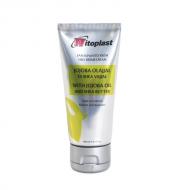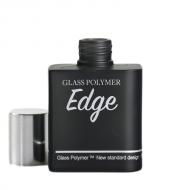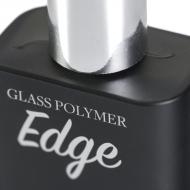Label
Label is a paper or foil product, and sometimes a direct overprint on the product. It is used to identify the product, define its content or for marketing activities (attracts the attention of consumers). Labels may differ in terms of shape, material and technique of production.
There are the following types of labels:
- Wet label - the oldest type of labels, which name comes from the method by which it is applied on the product – with wet glue. The popularity of this labels started to decrease in the 1970s. It was substituted with self-adhesive labels.
- Self-adhesive label - it is printed on a special self-adhesive material, e.g. foil or paper. On its back, there is a glue and protective layer that is removed prior to sticking the label. This type of labels is very often used on alcohol, cosmetics and food packaging.
- IML label (In Mould Label) - one of the latest achievements of the labelling branch. Its basis is made of the same plastic as the packaging. In this case, the process of joining the label with packaging is irreversible, so the final product is entirely recycled. IML labels are used in the following industries: food, chemical, building or hygienic. The advantages of this type of labels are: resistance to humidity, low temperatures, greases, dirt and other external factors. Very thin foils made of plastics (57-90mc) are used for IML labels printing.
- SSL label (Shrink Sleeve Labels) / SSE (Shrink Sleeve Etiketten) - is created as a result of printing the sleeve from foil that entirely shrinks under the influence of heat. Various materials are used for the production of labels from this group. These materials have a diversified contractility level, e.g. PVC, PETG, PS, etc. SSL label is sometimes used as a seal protecting from the opening of packaging or in order to join a few products that are sold in a promotion, e.g. 2 for 1. Currently, the SSL labels are the most often used in food, pharmaceutical and cosmetic industry. SSL label gives a possibility to overprint the entire surface of the product. Thanks to its thermoplastic features, it has no limitations when it comes to the shape of packaging – the foil sleeve after shrinking is tightly attached to the container. The foil is overprinted on the internal side, thanks to which it is resistant to mechanical damage, such as abrasions or scratches..
- Sleeving label - it is used for round surfaces, e.g. cables, pipes or wires.
- Multitag label - it has a form of a small booklet. It gives a possibility to lengthen the text on the packaging, e.g. to add a few language versions of product description.
- Reverse print label - it is a type of label with mirror overprint on a transparent foil. A glue is applied on the side of overprint, when the label is taped, the transparent foil serves as a protective layer for the print at the same time. Thanks to such method of production, labels that are resistant to abrasion and external factors are created (without the necessity of lamination). The overprint achieves also deep saturation.
- Intelligent/reactive label - it is characterized by the fact that it reacts on changes in the environment in which the product is located or in the product itself. It is the most often used in the food industry. Such labels are for example the labels with thermochromic ink overprint. An inscription appears on the properly cooled beer bottles that are decorated with this method. Another example are labels with temperature identification (they inform about the proper storage of products) or the ones on which the nanoparticles of silver were applied (they inform about the spoilage of product).











